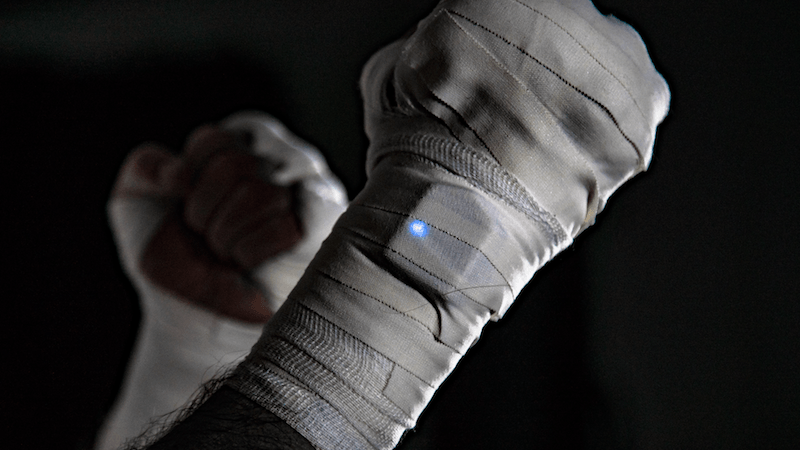Aside from the obvious examples, wearable tech has been all over the place at the Rio games. Olympic boxer, Tommy Duquette, for example, trained using a sensor that he helped develop. Worn on the boxer’s wraps, the sensor is designed to calculate the number of punches a fighter throws, as well as the speed, striking intensity and type of punch (jab, cross, left or right power). It uses two accelerometers and a gyroscope to capture motion tracking at a rate of 1k per second. If you’re interested in getting one of these punch trackers for yourself, you can preorder one now from Hysko.com, the company co-founded by Duquette.
Other Olympic athletes, such as the USA women’s volleyball team, have been using wearable jump monitors as part of their training for the past couple years. These jump monitors are credited with helping the team improve their performance to such an extent that they might have contributed to the team winning the 2014 FIVB World Championship for the first time ever. These devices work by having monitors that are worn by the players as well as an app for use by the coach. The coach can then track player stats and even get an overview of all their jumps throughout a game.
Olympic cyclists have also benefited from training with wearable technology, though not in a way that you might have expected. Rather than just having sensors on the bikes, the US Olympic cyclists helped in the development of smart eyewear designed to help elite riders see training data at a glance without having to look down or move their hands. Solos™, as these high-tech glasses are called, give coaches instant feedback on their riders, letting them know, for instance, if they are hitting their target speed or even if they need to shuffle the riders in the pursuit team.
During the swimming competitions, you might also have seen that swimmers were using body sensors in their training in order to measure the most effective form for their particular events, helping them improve their dolphin kicks, strokes, and turns, etc.
These are just a few examples of the wearable technology used by Olympic athletes. There are certainly other examples out there, and there’s no doubt we’ll see even more new technology in future Olympic events. One of the people tasked with making the most of wearable tech for our US Olympic athletes is Mounir Zo, USOC Director of Technology and Innovation. Here he is discussing wearable technology and its impact on sports:
It’s easy to imagine how the use of wearable technology by elite athletes might lead to breakthroughs that would benefit any of us in our quests to stay healthy or be more active.
Legacy Vulnerabilities AKA Software Senescence
Does your business still have an XT computer in the back office because it's running that one version of some database software that your business depends on? Yeah, we know there is. Most modern software doesn't work like that. If you aren't keeping your custom...



